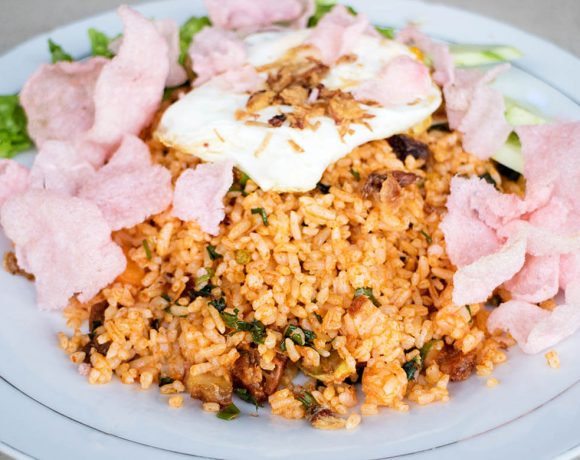The Indonesian culinary lexicon is home to a multitude of satay variations – from Sate Madura (Madura satay) and Sate Maranggi (marinated beef satay) to Sate Klathak (mutton satay with bicycle spoke skewers). More recently, the world of Indonesian satay has welcomed a new entrant: Sate Taichan (chicken or beef satay with sambal).
It has its roots in the Patal Senayan area, where once upon a time there were three ordinary satay hawkers who eventually become popular Sate Taichan sellers even to this day. Their names are Bang Ocit, Bang Amir and Bang Heri, and their respective businesses are located not far away from one another. People have fallen in love with Sate Taichan for its unique flavour and distinctive seasonings, which explains the increase in the number of Sate Taichan vendors in town.
Join our Jakarta Food Tour to discover the unforgettable dining experience!
The recipe for Sate Taichan was actually devised by a Japanese man who by coincidence stopped by at one of the aforementioned satay joints in Senayan. He coated the chicken meat with lime and salt, and then once grilled, they are served with sambal instead of peanut sauce or sweet soy sauce – methods to cook a satay unlike any other in Indonesia that you’ve ever seen or heard of. When the satay seller asked the Japanese national for the name of his peculiar skewered masterpiece, he replied “Sate Taichan”. And that is where its name was derived from.
While your common chicken satay would take a while to grill, Sate Taichan requires just three to five minutes of preparation time. Perhaps this is due to the thinner slices of chicken meat used. Despite the short cooking duration, its insides would still be fully cooked once the dish is ready. Its savoury taste comes from the lime and salt that are daubed on the satay. What makes it more interesting is the slosh of sambal ulek rawit (bird’s eye chilli paste sambal) that accompanies Sate Taichan, which offers a very different and very spicy sensation to one’s palate instead of the standard savouriness of peanut sauce or sweet soy sauce. You are able to ask for the seller to either dip the satay into the sambal or have them served separately.
These days, Sate Taichan is not just limited to using chicken meat or beef as a few purveyors have taken to serving shrimp, beef tongue, and squid variants of the dish. Besides satay, you could also try out Gultik (curry rice). No, it is not short for “Gulai Itik” (“duck curry”); instead, it refers to “Gulai Tikungan”, or “bend curry” in English. According to a Sate Taichan seller in Ampera, its name’s origins stemmed from the location of where it is sold, which is exactly on a bend. Unfortunately, the man did not know whether or not it is a branch opened by the celebrated Gultik place in Blok M.
One thing we do know, though, is that Sate Taichan has become a firm fixture worth celebrating in the culinary arena of Indonesia.









NO COMMENT